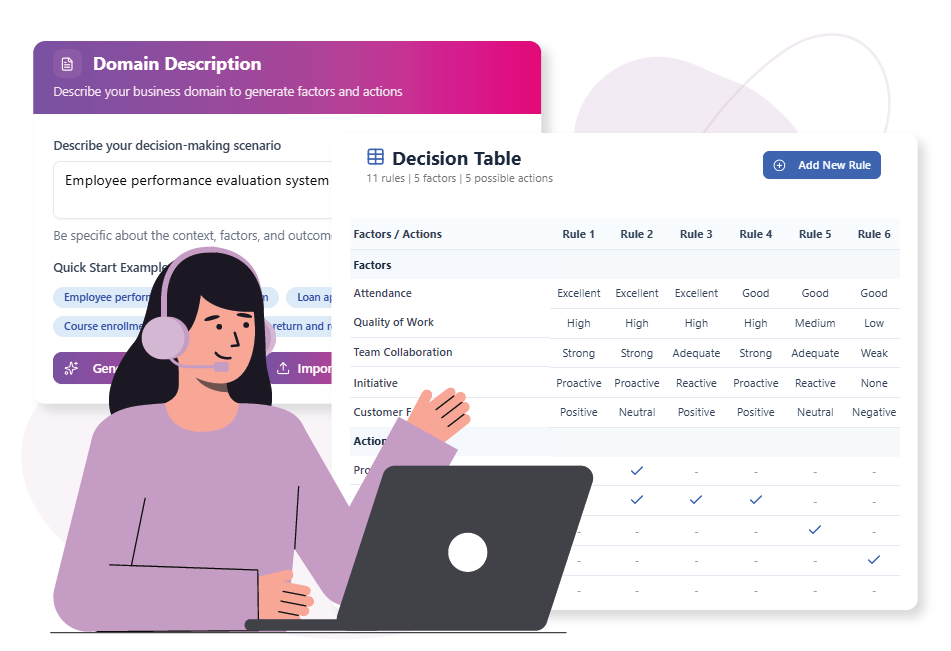Now Reading: Building Your First Decision Table: A Step-by-Step Guide
-
01
Building Your First Decision Table: A Step-by-Step Guide
Building Your First Decision Table: A Step-by-Step Guide
Creating a decision table with our AI generator is a straightforward, three-step process designed to get you from an idea to a finished table in minutes. This guide will help you quickly build your first decision table, taking you from a simple idea to a fully functional and exportable document. The process is designed to be intuitive for users of all skill levels, ensuring that you can focus on the business rules themselves rather than the mechanics of the tool.

Outline
Describe Your Scenario
Begin by outlining your business process or scenario in plain English. The more specific and detailed your description is, the better the AI can understand your needs and provide accurate suggestions. Be sure to mention all the key players, the conditions that influence the decision (inputs), and the outcomes you want to achieve (outputs).
Configure Factors & Actions
The AI will analyze your description and present a list of critical factors (conditions) and actions that it has identified. This is where you refine the AI’s suggestions and ensure the table reflects your exact needs. You have full control to edit the wording, delete factos or actions that aren’t relevant, and add new ones that the AI may have missed.
Generate and Export
Once your factors and actions are finalized, the AI generates a complete decision table. You can then export the table in multiple formats, including CSV, Markdown, and JSON, each serving a different purpose for documentation, analysis, or direct integration into an application.
The Importance of Refinement
After the initial generation, it is crucial to review and refine the table. The AI provides a comprehensive starting point, but you know your business rules best. Take a moment to check for any nuances or edge cases that might not have been clear in your initial description. You can easily add, remove, or modify rules directly within the table. This iterative process of generation and refinement ensures the final table is not only complete but also perfectly aligned with your business’s specific needs and goals.
Sharing and Implementation

Once you have a refined and finalized decision table, you are ready to share it with your team. The clarity of the table’s format makes it an excellent communication tool for both technical and non-technical audiences. A business analyst can present the Markdown version to stakeholders for final approval, while developers can use the JSON output to directly code the business logic. This eliminates any confusion and ensures a smooth handoff from requirements to implementation, saving time and preventing costly errors.

